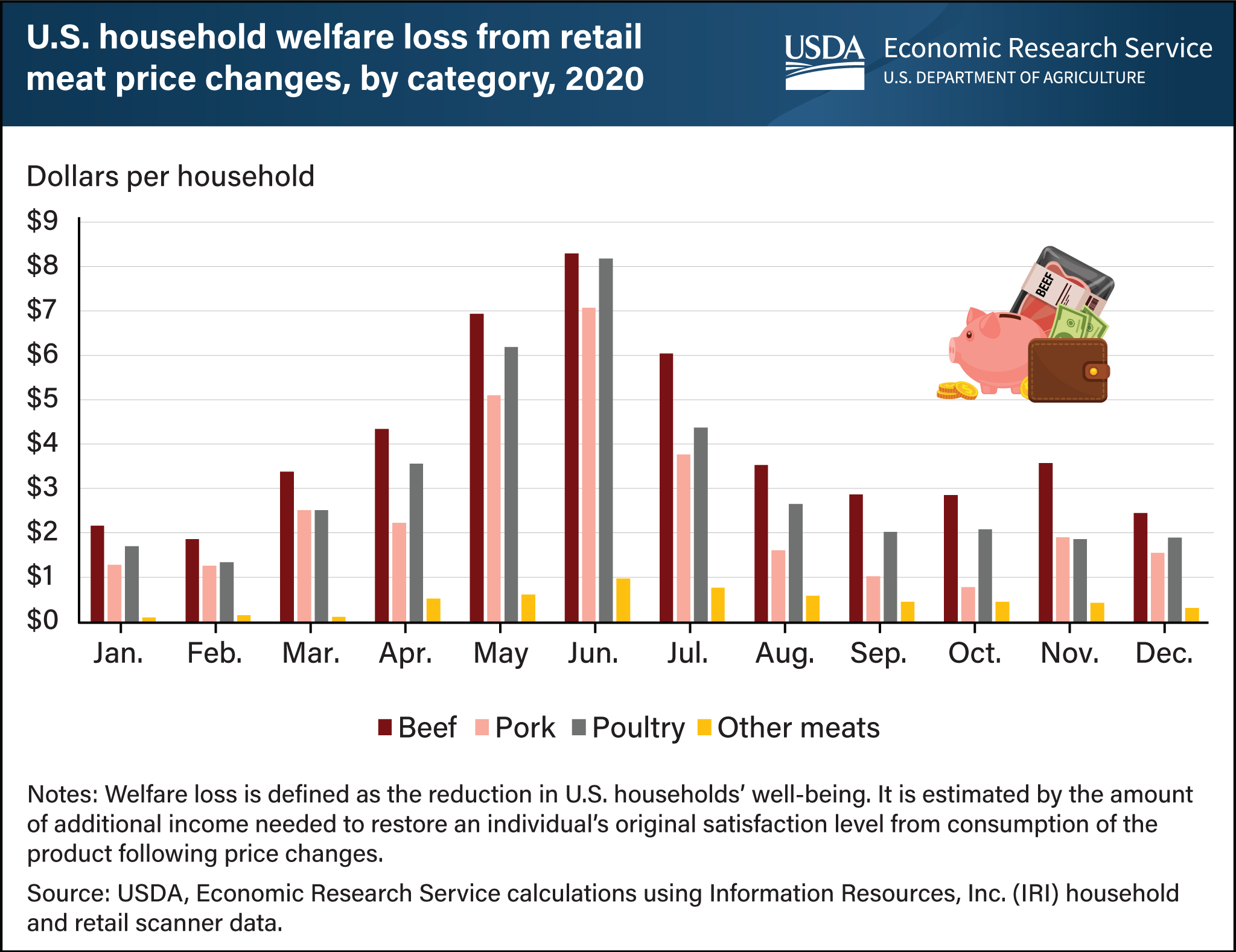Higher retail meat prices during COVID-19 pandemic negatively impacted U.S. households in 2020
- by Diansheng Dong and Hayden Stewart
- 5/12/2022

During 2020, U.S. households spent 14.5 percent more money to buy meat for at-home consumption as compared with 2019. This increase in spending reflected both an increase in the amount of meat households bought from retailers to offset reductions in what households previously consumed at restaurants and higher retail food prices. Using scanner data from Information Resources, Inc. (IRI), USDA, Economic Research Service (ERS) researchers examined and compared U.S. households’ meat purchases in 2020 and 2019 to answer this question: If retail prices for at-home meats had remained at their 2019 levels throughout 2020, how much better off economically would U.S. households have been? Researchers estimated the amount of “welfare loss,” or reduction in U.S. households’ well-being, by determining how much more money would be needed to buy meat in response to retail price changes and be satisfied. Despite maintaining their overall level of meat consumption, U.S. households’ welfare losses in 2020 from increases in retail meat prices were largest during the late spring and early summer when operations at meat-packing plants were most affected by the Coronavirus (COVID-19) pandemic. Those losses peaked at $24.51 per household in June 2020. Higher prices that month for beef accounted for welfare losses of $8.30 per household, for poultry the losses were $8.18 per household, and for pork the losses were $7.07 per household. In December 2020, U.S. household welfare losses were down to $6.19 per household, with higher prices for beef, poultry, and pork accounting for $2.44, $1.89, and $1.54, respectively. This chart appears in the ERS report Quantifying Consumer Welfare Impacts of Higher Meat Prices During the COVID-19 Pandemic, released April 2022.
We’d welcome your feedback!
Would you be willing to answer a few quick questions about your experience?

